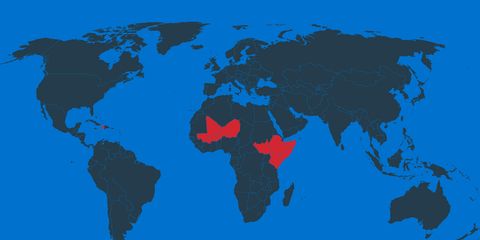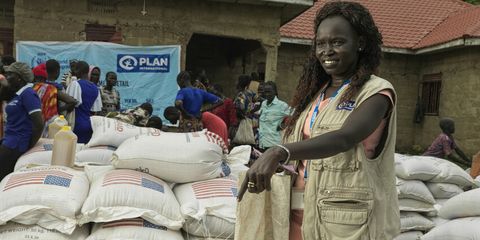Education can’t wait for drought affected girls in Somalia
15 August 2022At least 4 million girls in low and lower-middle-income countries will be unable to complete their schooling due to the impacts of climate change. These are the startling figures from a recent report from the Malala Fund.

A blog by MarieDiane Uwamahoro, Deployable Education in Emergencies Specialist
I’ve seen for myself how the drought crisis in Somalia has led to increased humanitarian needs and disrupted children’s education, especially that of girls. The country remains among one of the most affected in the Horn of Africa region and the lack of food, water, and pastoral land for animals means girls are at greater risk of missing or dropping out of school as they spend even more time doing chores.
According to organisations working in Somalia, 2.4 million school-aged children affected by drought and of these 1.7 million have dropped out of school.
Drought limits girls’ access to quality education
Hibbaq is 18 years old and lives in Somaliland. She aspires to continue her formal education, go on to university and then work as a teacher in her community.
“Since the drought started, we often miss school because of other priorities at home such as taking care of animals and livelihoods and fetching water for the family. The water collection points are distant as we leave at 8:30 am and come back home around noon to get clean water, and that’s how we miss school.”
Hibbaq, 18, Somaliland
Before the drought, more than 70% of school-aged children were already out of school in the country, and the national enrolment rate for primary education remains low for girls mainly due to cultural practices in the community and gender stereotypes. Other barriers to education have historically included inadequate school and WASH facilities, overcrowded classrooms, and insufficient school materials. The impacts of drought and COVID-19 related restrictions have simply added to these obstacles.
“Our school has one classroom and hosts all children from G4 to G8 where all children sit together facing one blackboard. The class is divided into three parts and one teacher provides lessons to all children but at a different fixed time. When the teacher gives us homework, we wait till the morning and do it at school because we don’t have light at home. The school toilets don’t have lockers and we don’t like to use them.”
Hibbaq
Improving school facilities and home learning environments can help to boost school attendance, learning outcomes and children’s wellbeing, particularly for those who need access to clean sanitation facilities during menstruation. Across Africa, half of the girls who drop out of school do so because their school doesn’t have basic toilets.
The drought in Somalia is exacerbating barriers to education. Children are being displaced, school facilities are destroyed by windstorms and some are closed due to water scarcity, food insecurity, and movement of the population. Girls who do have access to education have to split their daily time between attending classrooms and fetching water for their households and animals, as women and girls are usually responsible for water collection.
Fetching water is part of the main chore activities for girls like Hibbaq and walking long distances to collect water puts them at greater risk of gender-based violence and sexual assault.
“We walk long distances to come to school, and we are afraid that we might meet a crazy person that may treat us badly. We also go for fetching collectively as a group to minimise the risks of being attacked by someone but when neighbours have water, I have to go alone because I have no choice.”
Hibbaq
Children need support for quality learning during the hunger crisis
With prolonged school closures and children out of school for a long time, children are at risk of never returning to school and being exposed to different forms of exploitation and abuse.
“As a suggestion, we need school fences, locks for latrines and school meals.”
Hibbaq
Plan International is working alongside YOVENCO and other local partners to provide safe, inclusive and quality education for girls and boys. The project focuses on access to safe and inclusive education, gender equality, additional support to students who dropped out of school due to drought, capacity building of teachers, cash voucher assistance, climate change adaptation, sexual reproductive health through the provision of menstrual hygiene kits, child protection system strengthening, and community awareness on the importance of education and gender equality.
A drought crisis doesn’t mean that learning should stop and there is clear evidence that education can reduce vulnerability to climate shocks so education must be prioritised to continue throughout the drought response.
If donors are looking for fundable models that can work, just look at the evidence showing how the provision of school meals can increase enrolment and retention rates, especially among girls in areas where school attendance is low.
It’s critical that we find funding to address the unique needs of girls so that they can access the education they need to reach their full potential. For girls like Hibbaq, learning cannot wait.


